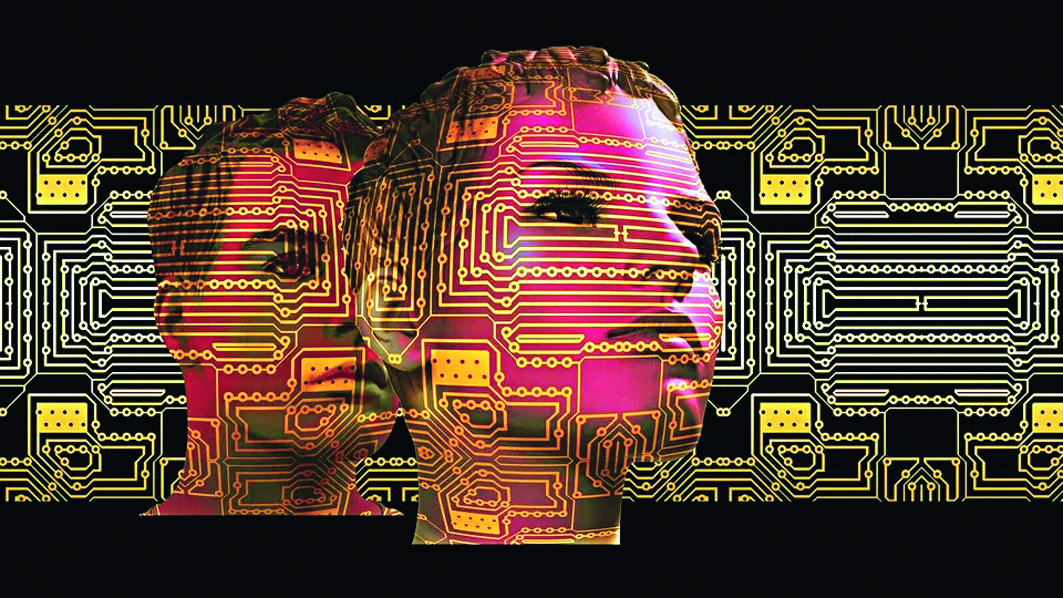THE DEEPFAKE RESURRECTION
From black and white memories of great-grandparents to iconic figures like Bhagat Singh, here’s how deep fake turns into a modern ‘Ouija Board’ breathing ‘life’ within the dead

Within virtual ancestry, deepfake breathes life into family figures and cherished moments, offering a way to reconnect with the past.” — Dr. Shreeram Iyer, Group Chairman & CEO, Prisma AI
For the past few months, the Artificial Intelligence (AI) driven deepfake plague has been in the news for all the wrong reasons. Several celebrities and politicians screamed foul about their deepfakes (scams and video hoaxes). However, deepfake has emerged as a tech-powered ‘Ouija Board’ [aka spirit board] breathing 'life' into ‘still’ photos of old family albums complete with graceful smiles, blinks and winks.
Yaswanth Sai Palaghat, a Hyderabad based content creator and Youtuber created a Youtube video of himself using the Deep Nostalgia app to convert his childhood photo into a convincing reality. Speaking about his experience with the app, Yaswanth quips, “I was curious to explore my childhood alongside old photos of my grandfather and late relatives. I was amazed by the near accurate results bringing cherished memories to life.”
Virtual Time Machine
While time machines still exist in La La Land, deepfake has challenged the notion of acting as a virtual time traveller in manipulating still photos to crack a smile. According to Dr. Shreeram Iyer, Group Chairman and CEO, Prisma AI, “Within virtual ancestry, deepfake breathes life into family figures and cherished moments, offering a way to reconnect with the past.” A study by The International Journal of Research into New Media Technologies reveals that Deep Nostalgia, a brainchild of the My Heritage App is powered by a sophisticated deep learning algorithm from D-ID which adeptly pairs each uploaded photo with a suitable 'driver' video for convincing animations. Applica-tions like Deep Nostalgia maintain strict confidentiality of user data. Through an analysis of key features such as head orientation, the algorithm blends the photo with a compatible blueprint video, resulting in a realistic animated outcome.
Real-Life Experiences
A study conducted by Beaunoyer and Guitton 2020 reveals that the necessity to reevaluate death and loss has become increasingly intense since the Covid-19 pandemic. Anusha Yadav, a photographer and founder of Indian Memory Project who used a deepfake webpage for one of the photographs of her late father says, “Having not seen him for 35 years, the attempt to animate his eyes and body was interesting, However, the outcome was disappointing as it was a mere machine-generated movement used for every photograph and lacked his natural essence.” Muktabh Mayank Srivastava, Co-founder of Parallel Dots tried the technology on freedom fighter Chandrashe-khar Azad. “In a world where no one has seen him in real life, we, like the algorithm, can guess. Generative AI aims for believability, not necessarily the truth.”
The Ethical Implications
Actors Rashmika Mandanna, Katrina Kaif, Alia Bhatt, and PM Modi were all victims of deepfake videos. Worse still, a 73-year-old man in Kerala lost `40 Lakh to an AI-enabled deepfake fraud.
Virtual Time Machine
While time machines still exist in La La Land, deepfake has challenged the notion of acting as a virtual time traveller in manipulating still photos to crack a smile. According to Dr. Shreeram Iyer, Group Chairman and CEO, Prisma AI, “Within virtual ancestry, deepfake breathes life into family figures and cherished moments, offering a way to reconnect with the past.” A study by The International Journal of Research into New Media Technologies reveals that Deep Nostalgia, a brainchild of the My Heritage App is powered by a sophisticated deep learning algorithm from D-ID which adeptly pairs each uploaded photo with a suitable 'driver' video for convincing animations. Applica-tions like Deep Nostalgia maintain strict confidentiality of user data. Through an analysis of key features such as head orientation, the algorithm blends the photo with a compatible blueprint video, resulting in a realistic animated outcome.
Real-Life Experiences
A study conducted by Beaunoyer and Guitton 2020 reveals that the necessity to reevaluate death and loss has become increasingly intense since the Covid-19 pandemic. Anusha Yadav, a photographer and founder of Indian Memory Project who used a deepfake webpage for one of the photographs of her late father says, “Having not seen him for 35 years, the attempt to animate his eyes and body was interesting, However, the outcome was disappointing as it was a mere machine-generated movement used for every photograph and lacked his natural essence.” Muktabh Mayank Srivastava, Co-founder of Parallel Dots tried the technology on freedom fighter Chandrashe-khar Azad. “In a world where no one has seen him in real life, we, like the algorithm, can guess. Generative AI aims for believability, not necessarily the truth.”
The Ethical Implications
Actors Rashmika Mandanna, Katrina Kaif, Alia Bhatt, and PM Modi were all victims of deepfake videos. Worse still, a 73-year-old man in Kerala lost `40 Lakh to an AI-enabled deepfake fraud.
On November 8, the Indian government directed ‘social media intermediaries’ to re-move deepfake videos from their platforms within 24-36 hours of a filed complaint. However, India lacks specific regulations to penalise deepfake-generated images of ancestors or iconic figures. As regulations on the internet tighten control over deepfake content, the future appears to foster a benign outlook for the technology.
( Source : Deccan Chronicle )
Next Story

